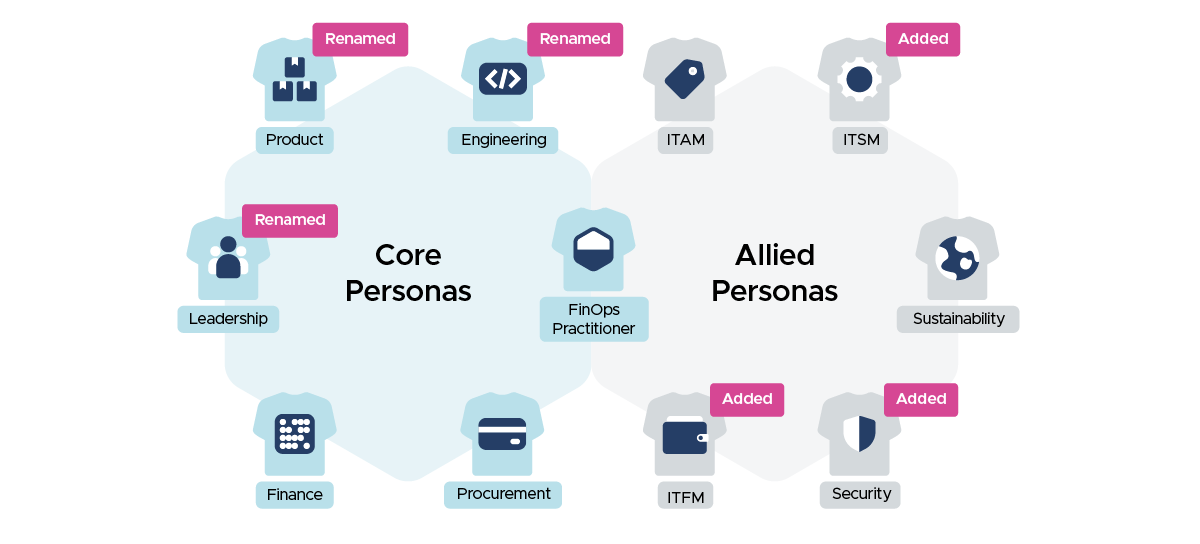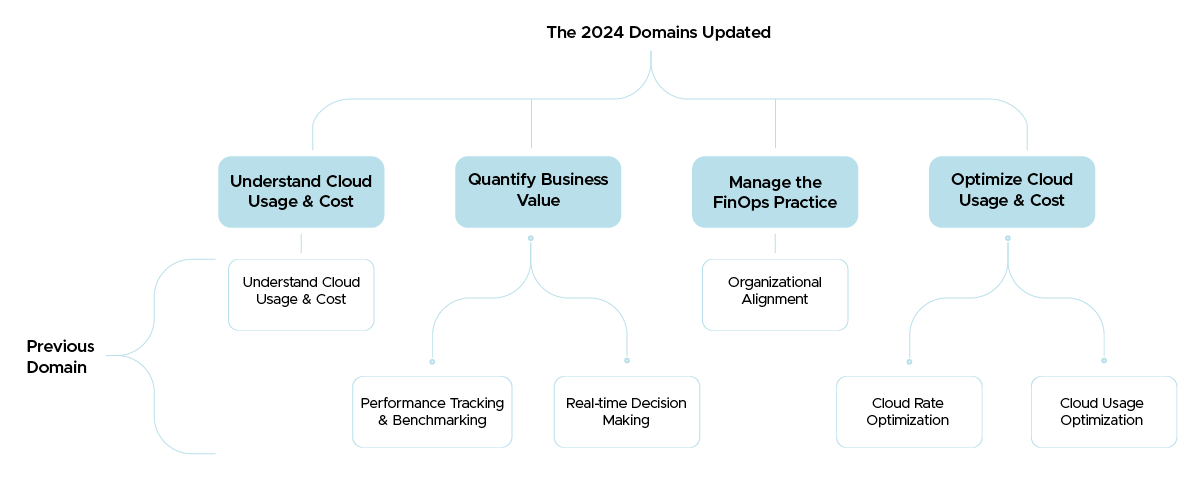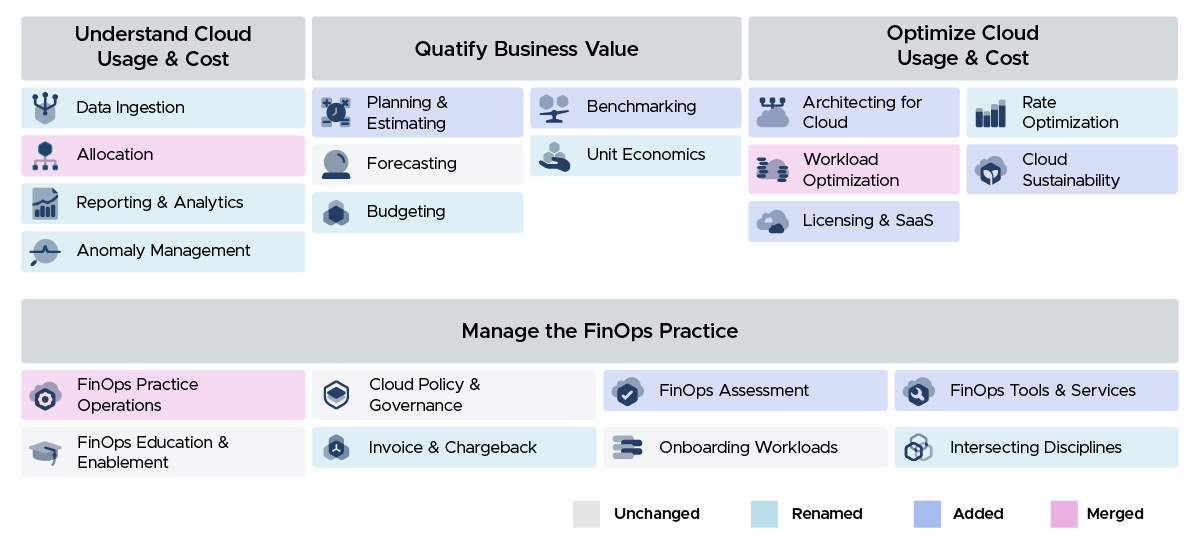The FinOps Framework is a living document, or more aptly, a roadmap for organizations to manage their cloud costs effectively, along with making the most out of their cloud investments. This framework evolves through the collective experience and insights of a community including technical experts and thought leaders, dedicated to refining cloud financial management practices.
This guide is constantly being updated, with the 2024 changes released a few weeks ago. And yes, this is a big deal for all FinOps practitioners since they reflect the latest trends and best practices in cloud cost optimization.
What is in the FinOps Framework?
Think of it as a toolbox full of strategies for team collaboration, smart budgeting, and making data-driven decisions. It covers everything from the basic principles of FinOps, how to mature in FinOps, detailed roles or “personas” involved, and specific areas or “domains” to focus on for improving cloud cost management strategies.
With the 2024 updates, the FinOps Foundation has added even more tools to this ‘box’, especially for navigating newer challenges like cloud sustainability and integrating with other IT management areas. This means FinOps practitioners now have a more robust guide to help their organizations thrive in their turbulent journey through the cloud.
Why the Framework is Changing?
The motivation to update the framework came from the FinOps community itself, which has grown by leaps and bounds. More people across the globe now manage cloud budgets for their organizations, which means there is a wealth of new insights, solutions, and challenges as well. This diversity is exactly why the Framework’s language and concepts needed a refresh.
Frequently used terms like “cloud cost optimization” and “cloud financial management” no longer capture the full scope of today’s challenges and opportunities. The framework aligns with a broader spectrum now, including emerging areas like cloud sustainability, IT Asset Management (ITAM), IT Financial Management (ITFM), and IT Service Management (ITSM).
The 2024 revision of the FinOps Framework is a milestone that reflects these shifts. It aims to capture this collective wisdom, making the framework an essential playbook for the evolving demands of the cloud landscape.
What are the 2024 changes to the FinOps Framework?
These new updates signify a pivotal movement in the evolution of Cloud Financial Management practices. These changes are driven by the insights and experiences of the Technical Advisory Committee of the FinOps Foundation, and the larger Cloud FinOps community.
Refined Definition and Scope
One of the central updates is the refined definition of FinOps, which reflects the evolutions in cloud management. The focus has shifted from mere cost optimization to maximizing the business value derived from cloud investments. This updated definition acknowledges the broader spectrum of challenges and opportunities in FinOps, including cloud sustainability and integration with other IT Management areas.
Revised Personas and Allied Roles
The personas within the FinOps Framework have undergone restructuring and now they align better with the updated cloud management needs. Core Personas, who directly engage in FinOps practices, have been streamlined and simplified to emphasize their critical roles in driving FinOps initiatives.
Additionally, there are Allied Personas, which are roles that are not directly involved in FinOps practices. They might be coordinating with other FinOps practitioners and might be working with intersecting disciplines. The new update has added a few more Allied Personas to encompass both the traditional and emerging disciplines in FinOps.

Domain Updates - Shifting Focus to Business Outcomes
The FinOps domains have been updated for an outcome-driven approach, emphasizing the business objectives that the organization aims to achieve. The major changes include merging some domains to streamline focus areas and renaming these domains to better align with the desired outcomes. The new domains represent the four fundamental business outcomes that organizations expect to achieve from their FinOps practice.

Capability Updates - Capturing New Challenges
FinOps capabilities are the building blocks of actionable tasks and activities, which are required to meet the challenges of the FinOps practice. These help various FinOps Personas in aligning technology decisions with business objectives.
New capabilities, such as Licensing & SaaS, and Architecting for Cloud, have been introduced to address the emerging challenges in cloud infrastructure design and management. This also encompasses the advancements in cloud technology. Additionally, existing capabilities have been refined and merged to reduce overlaps and to provide a more cohesive framework for FinOps practitioners. However, certain capabilities remain unchanged and are still relevant.

Conclusion
There has been an active involvement of the FinOps community in shaping the framework’s evolution. Their contributions in terms of insights, experience, and feedback have played a vital role in guiding these updates, ensuring that the FinOps Framework remains relevant, comprehensive, and responsive to the emerging needs of FinOps practitioners.
The 2024 update to the FinOps Framework ensures that it continues to stand as a trusted resource, empowering various stakeholders to optimize cloud resources, derive value, and navigate the complexities of cloud cost optimization with confidence and the right understanding.
Did you know that CloudKeeper is a Premier Partner at the FinOps Foundation? We ensure all our FinOps practices are updated and optimized in tandem with the new FinOps Framework.
Get your entire cloud infrastructure audited by us, completely for free! Talk to us today!
